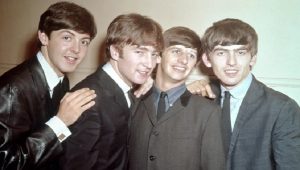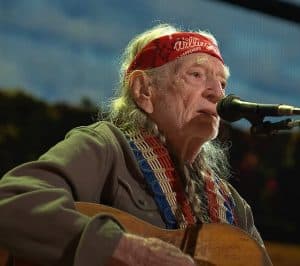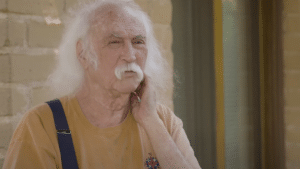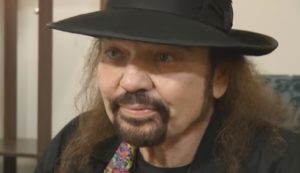5 Bruce Springsteen Songs Made Iconic By Sax Solos
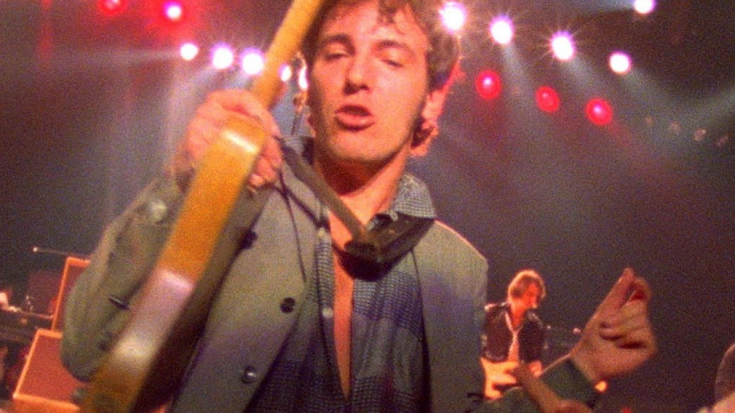
via Bruce Springsteen / Youtube
American rock icon Bruce Springsteen is a legendary figure whose music embodies the heart and soul of America. His anthems, with their earnest lyrics and electrifying melodies, have earned him a place in the pantheon of rock ‘n’ roll greats.
Yet, it’s not just Springsteen’s raw, poetic storytelling and boundless energy that define his sound; it’s also the soul-stirring saxophone solos by one of the iconic E Street Band’s Clarence Clemons.
Bruce’s reliance on Clemons is evident on the cover of one of his best albums, Born to Run. Beyond its visual appeal, this image silently acknowledges the significant role that Springsteen’s collaborators in the E Street Band, particularly Clemons, played in his career.
Clemons’ remarkable talent is evidenced by the fact that for many rock enthusiasts, his solos with the E Street Band comprise their primary exposure to saxophone music. His brief but powerful two-minute solo in “Jungleland”, the closing opus of Born To Run, arguably represents the pinnacle of saxophone solos, drawing out elegance and lyrical beauty from an instrument that often grapples to convey either.
5. “Tenth Avenue Freeze-Out” (Born to Run, 1975)
“Tenth Avenue Freeze-Out” is undoubtedly a pivotal moment in the Bruce Springsteen discography and is an homage to Clarence Clemons himself. The song encapsulates the joy, the camaraderie, and the timeless spirit of the E Street Band.
As Springsteen tells the story of the band’s formation and evolution, the saxophone takes on a central role in the narrative. Clarence’s sax solo is a tribute to the enduring partnership between Springsteen and Clemons. The saxophone becomes a voice of celebration, commemorating the band’s journey from humble beginnings to rock ‘n’ roll stardom.
The sax solo in “Tenth Avenue Freeze-Out” is a jubilant, raucous explosion of sound. It’s a musical outpouring of gratitude, energy, and sheer delight. As Clemons’ sax wails and Springsteen’s lyrics recount the band’s experiences, the solo becomes a declaration of triumph and perseverance.
In the fabled track, Clemons wielded the saxophone as a symbol of unity and friendship. The sax solo embodies the unbreakable bond between Springsteen and Clemons, as well as the shared history of the E Street Band.
4. “Rosalita (Come Out Tonight)” (The Wild, the Innocent & the E Street Shuffle, 1973)
“Rosalita (Come Out Tonight)” is a high-spirited and infectious classic that captures the essence of Bruce Springsteen’s live performances. This song is a exuberant celebration of love and youthful spirit, and it’s underscored by the dynamic presence of the saxophone.
In “Rosalita”, Clarence’s saxophone goes beyond being an instrument; it’s a character in the story. The saxophone takes on a persona of its own, beckoning the titular Rosalita to come out and play. As Springsteen’s lyrics describe the protagonist’s desperate plea for his love to escape, the saxophone mirrors that urgency and excitement. It adds a layer of fervor and spontaneity to the narrative, encapsulating the joy of a carefree night on the town.
The saxophone solo in “Rosalita” is like a whirlwind romance in musical form. It dances and twirls with an infectious energy, inviting the listener to join in the festivities. It’s impossible not to feel the enthusiasm and sense of freedom that emanates from both the lyrics and the saxophone’s melodies.
This groovy track is a song that encourages us to throw caution to the wind and embrace the moment. The saxophone, in all its exuberance, stands as a testament to the wild, uncontainable spirit of classic rock.
3. “Thunder Road” (Born to Run, 1975)
“Thunder Road” serves as a heartfelt and evocative opening to Bruce Springsteen’s seminal Born to Run. The song’s lyrics weave a tale of love, escape, and the enduring belief that there’s something better waiting just around the corner. In this ballad, the saxophone takes on a different role compared to the anthems we’ve explored so far.
In “Thunder Road”, the saxophone, once again breathed to life by the remarkable Clarence Clemons, provides a counterpoint to Springsteen’s yearning vocals. The saxophone doesn’t burst forth with an immediate, fiery solo, but rather, it gently enters the narrative like an old friend joining a conversation. Its melodies complement Springsteen’s lyrics, adding depth and warmth to the storytelling.
As the song progresses, Clemons’ saxophone becomes more prominent, mirroring the increasing intensity of the lyrics. It’s as if the sax is a silent confidant, echoing the emotions of the protagonist. The saxophone solo, though shorter in duration compared to some other Springsteen classics, conveys a sense of longing and nostalgia, punctuating the desire to leave the past behind and head toward the unknown.
“Thunder Road” showcases Springsteen and his band’s ability to use the sax in different ways. In this case, it’s not about a rousing crescendo, but about subtlety and nuance. The saxophone enriches the song with a layer of sentiment and tenderness, making it a standout track in Springsteen’s vast repertoire.
2. “Born to Run” (Born to Run, 1975)
“Born to Run” is a declaration of freedom and youth, a timeless anthem that encapsulates the spirit of rebellion and the desire to break free from the constraints of small-town life. This track has become synonymous with Springsteen’s name and the sound of the E Street Band.
Clarence’s sax solo in “Born to Run” acts as a musical exclamation point. It punctuates the song’s chorus, adding an exhilarating burst of energy that resonates with the feeling of the open road and the thrill of escape. As Springsteen’s lyrics tell the tale of young love and a desire for something more, the saxophone solo amplifies the urgency and passion of the narrative.
The legendary saxophonist encapsulates a sense of limitless possibility in this track. It’s a musical embodiment of the American dream, the notion that one can cast off the chains of the ordinary and head out into the world, seeking adventure and love.
Clemons’ cathartic solo is a rallying cry, a call to all those who have ever yearned for something beyond the ordinary much like the musical equivalent of revving the engine and accelerating into the unknown. “Born to Run” reminds us that life is meant to be lived to the fullest, and the sax solo, with its soaring notes and unbridled enthusiasm, is the embodiment of that philosophy.
1. “Jungleland” (Born to Run, 1975)
Born to Run is just peppered with the greatness of Clemons. Nestled deep within the sprawling masterpiece lies the sprawling epic known as “Jungleland.” This nine-and-a-half-minute magnum opus is a testament to the power of storytelling through music.
The unparalleled passion and skill by the late Clarence Clemons is on display in “Jungleland” as it becomes the voice of this modern-day epic. As the song builds, Clemons’ saxophone soars and wails, weaving a narrative of its own, alongside Springsteen’s poignant lyrics.
And once again the musical interlude becomes an emotional apex, and the sax makes all of this more pronounced. It captures the raw yearning of the characters in the song, and the instrument’s cries resonate with the struggles, heartaches, and triumphs of the human spirit.
Springsteen’s genius lies in the way he seamlessly blends Clarence’s sax into his narrative, using it as a brush to paint vivid images in our minds. The solo crescendos to a climax that mirrors the intensity of the story, and it’s no wonder that “Jungleland” remains one of the most iconic classic rock tracks of all time.









